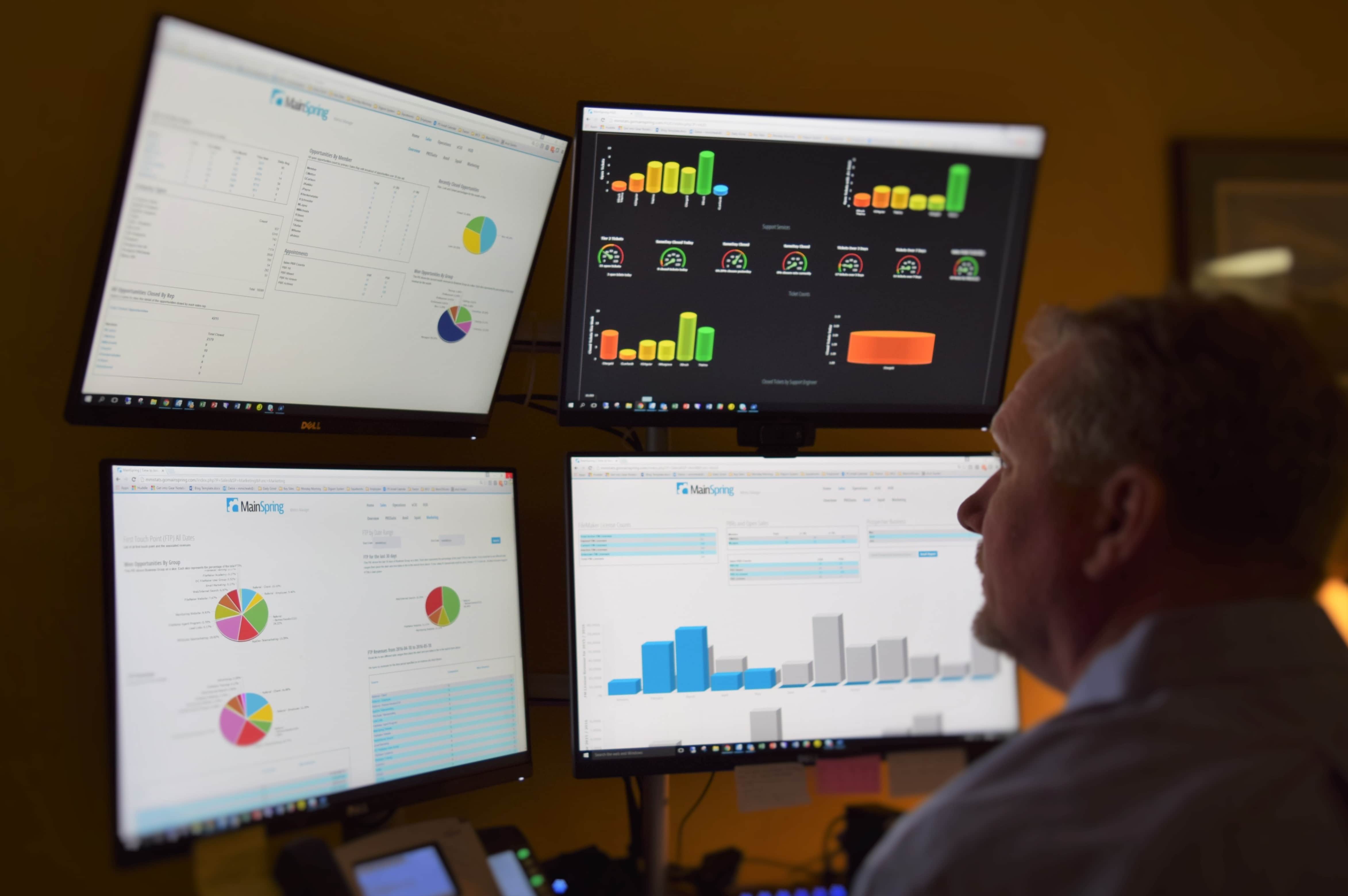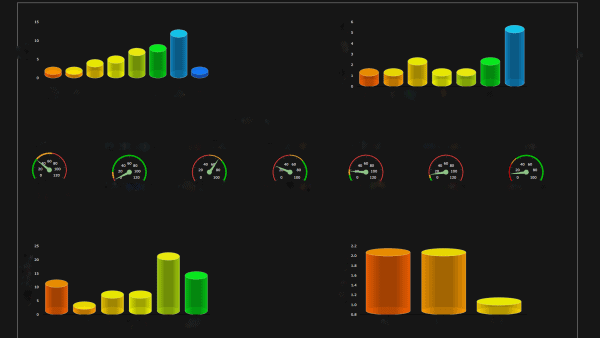 Your automotive dashboard tracks the key measurements you need to know when taking a road trip. For instance…
Your automotive dashboard tracks the key measurements you need to know when taking a road trip. For instance…
- Your car’s efficiency is noted by your current miles per gallon reading
- The condition of the engine is displayed with temperature and oil pressure gauges
- Your destination is tracked by your GPS readout
Without this crucial information, you would be heading nowhere, fast.
Similarly, a business dashboard can also give you the same kind of critical information about your strategic business plan. Now that sounds like efficiency.
Don’t end up on the side of the road
As a vCIO, I regularly meet with executives and business owners to discuss strategy, goals and barriers within their organization. Almost every business tracks numbers on a regular basis; however, the way that the numbers are tracked varies greatly from one organization to the next.
Most are manually tracking these numbers through reports from various systems, which can be a tedious and time-consuming process. Often, these numbers are compiled and manually examined on a weekly or monthly basis. The challenge with this method of review is that, by the time that the data is gathered and analyzed, it is already stale and useless. It becomes a reflection on what has occurred and not what is occurring.
Essentially, businesses are driving a car without a fuel gauge. Instead of tracking real-time business data that would allow them to make adjustments, they are calculating the miles they have driven every few hours and determining how much fuel remains. Because of this, organizations find themselves on the side of the road wondering why they didn’t stop at the last gas station.
To ensure that your company doesn’t end up on the side of the road, avoid these common pitfalls:
- Information overload. Often, dashboards are loaded with too much information, which creates a cluttered and confusing experience of too much data to sort through.
- Bad data. An effective dashboard will show data that measures your key performance indicators (KPIs) for a company, group or user.
- Poor design. Bad graphs, cluttered numbers, and text that is shrunk to fit a window are all issues that will detract from the overall benefit of using dashboards.
- Stale Data. Dashboards should pull data from your critical business systems in real-time. If data isn’t current, then neither are the benefits.
Mapping out your road trip
Companies that track live data know how many outbound sales calls were made that day. They can tell how many billable hours were worked at any point throughout the week. They can tell if they’re on track with fundraising efforts for the week, month or year. Essentially, these numbers provide critical real-time answers that show how the team is performing against the goals in your strategic plan.

Basically, they’ve mapped out their entire road trip with the help of their business dashboard.
Every company can benefit from dashboarding metrics within their organization because it allows them to identify and correct negative trends much quicker. Dashboards can also help them recognize the efficiency gains from new decisions.
With dashboards, you have the power to make strategic decisions for your organization. They can also help you motivate your employees with real-time data that shows them how close they are to their goals. Establishing a business dashboard provides an advantage that allows you to separate your organization from the competition.
So, how are your numbers this week?
